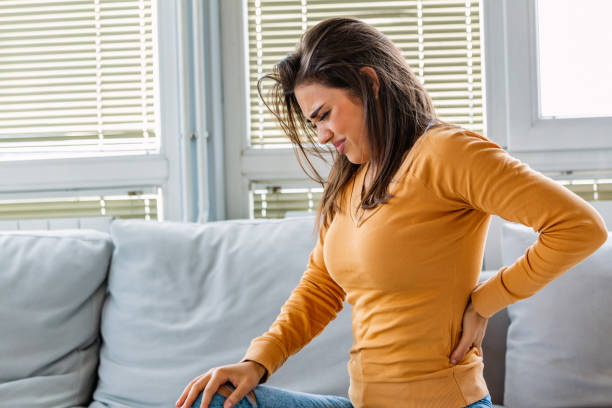
Causes of Low Back Pain in Young Adults
Disc herniation occurs when the soft tissue between the vertebrae in the spine pushes out and presses against a nerve, causing pain and discomfort. This is sometimes referred to as a pinched nerve. While this condition is more commonly seen in older adults, it can occur in young adults as well. Common symptoms include sharp, shooting pain in the back, legs, or buttocks, as well as weakness and numbness in the affected area.
Lumbar spondylolisthesis is a common cause of low back pain in young adults. This condition occurs when one vertebra in the lower spine slips forward over the vertebra below it, causing pressure on the spinal cord and nerve roots. Symptoms of lumbar spondylolisthesis can include lower back pain, stiffness, muscle weakness, and numbness or tingling in the legs.
Other causes of low back pain in young adults may include poor posture, improper lifting techniques, and overuse injuries from sports or physical activity. These conditions can cause strain on the muscles, ligaments, and joints in the back, leading to pain and discomfort.
The Increase in Low Back Pain Complaints Among Young Adults
While the above conditions maybe more well known causes of low back pain in young adults, recent research has shown that a sudden increase in complaints may be attributed to other factors that are often overlooked. These include:
Prolonged sitting
Many young adults spend long hours sitting at a desk, either for work or for school. This has recently increased in the post COVID era due to a surge in remote work. Prolonged sitting can lead to poor posture, which can put added strain on the lower back. Additionally, sitting for extended periods can lead to overall decrease in core muscle activation and joint stiffness.
Decreased Physical Activity
With the rise of remote work and online learning, many young adults are spending more time at home and less time engaging in physical activity. A sedentary lifestyle can lead to a weakened core and back muscles, making it more difficult to support the spine and leading to increased low back pain.
Weekend Warrior Workouts
Some young adults try to make up for their lack of physical activity during the week by engaging in intense workouts on the weekends. While exercise is important, overdoing it can lead to muscle strains, sprains, and other injuries that can cause low back pain.
Solutions for Low Back Pain in Young Adults
Ergonomic Chairs/Standing desk
One way to alleviate low back pain caused by prolonged sitting is to invest in an ergonomic chair. These chairs are designed to promote good posture and reduce strain on the lower back. Even better than a ergonomic chair would be to invest in a standing desk. The simple difference between standing versus sitting has shown to improve muscle activity in abdominal muscles, glutes, quads, and more along with being generally better for cardiovascular health.
Physical Activity
Increasing physical activity is another way to reduce low back pain in young adults. Regular exercise and movement will allow the lower back to stay more mobile and maintain a healthy balance between core strength and joint mobility. Simple routines such as 10 minute yoga daily along side, regular walking, and resistance training 2-3 times a week will make a big difference in preventing low back pain!

